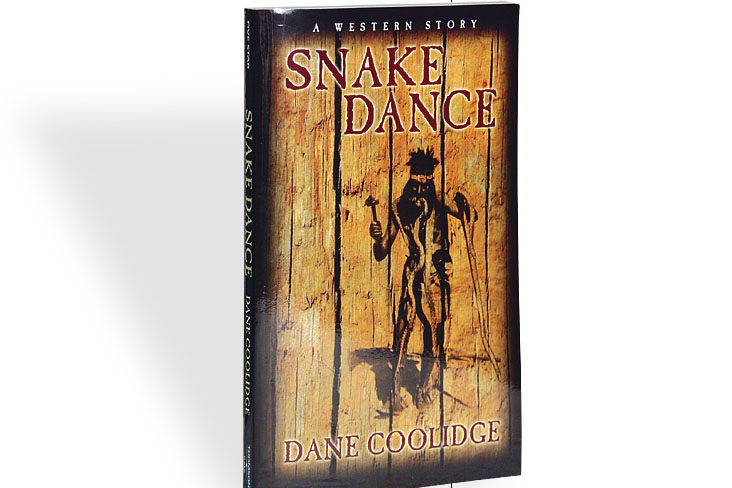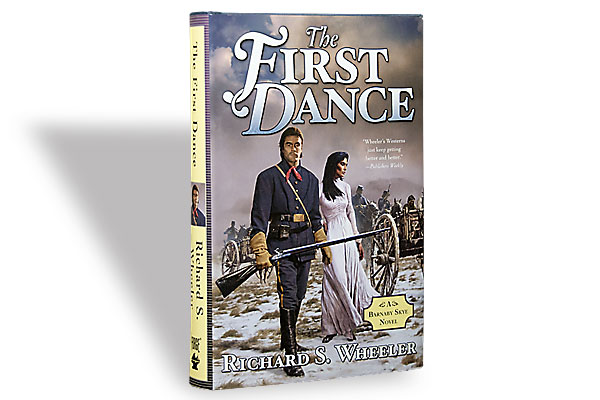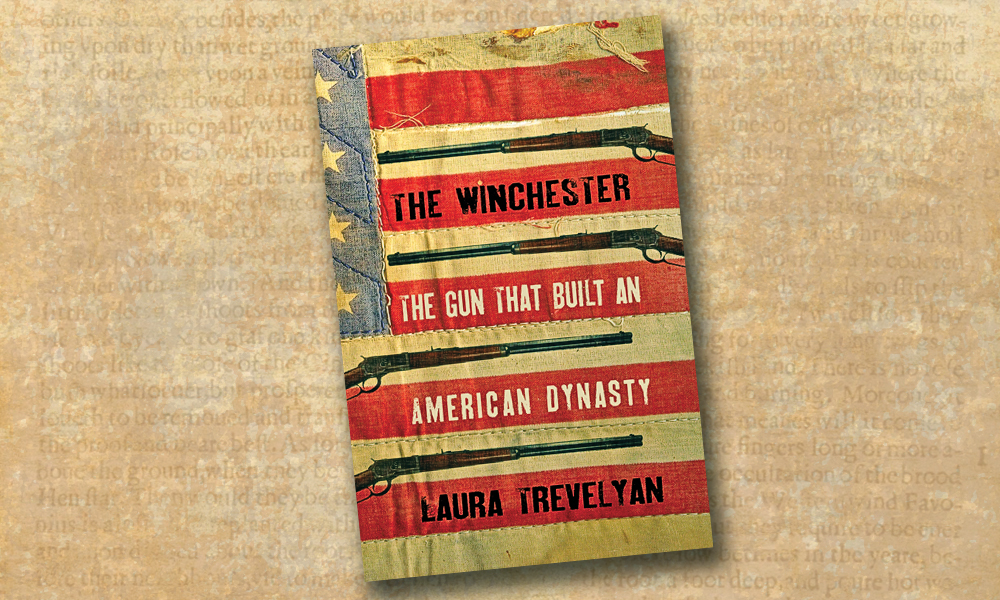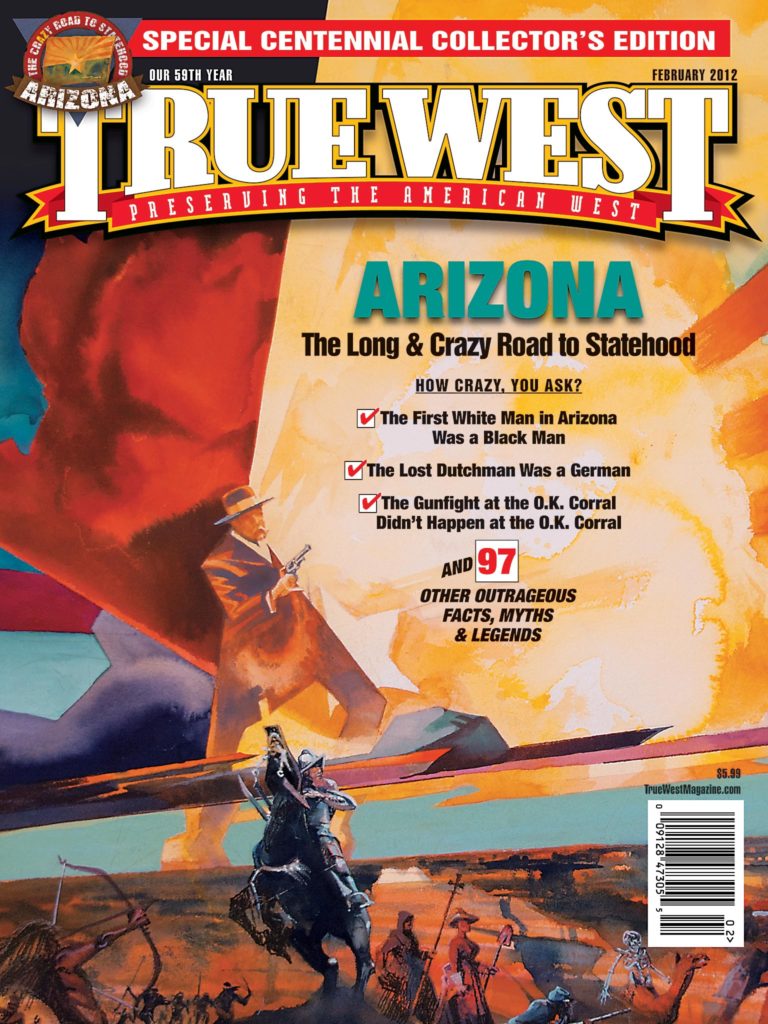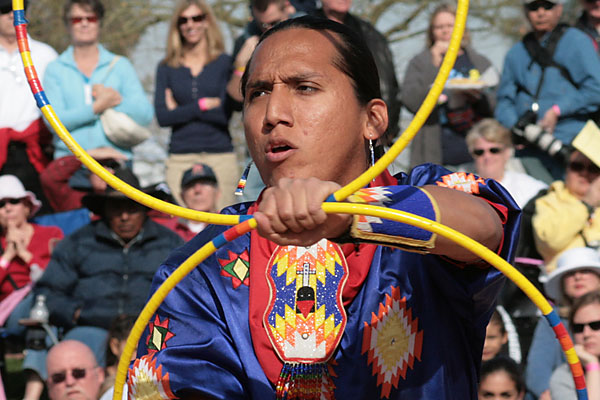 Thanks to the pull of love, one of today’s most acclaimed hoop dancing families in the nation helped to revive the native dance that had all but died by the 1980s.
Thanks to the pull of love, one of today’s most acclaimed hoop dancing families in the nation helped to revive the native dance that had all but died by the 1980s.
When Ken Duncan, an Arizona Apache, followed his sweetheart Doreen, a North Dakota Mandan/Hidatsa/Arikara, to Brigham Young University in 1976, they joined the university’s native dance troupe. Ken remembers its 10 members were “twice as many as all the hoop dancers in all of North America at the time—it was almost a dead art.”
So it was with particular pride that in February 2011, at the Heard Museum’s annual World Championship Hoop Dance Contest, they watched their second son, 27-year-old Tony, take the top honors in the adult division. “Tony was just a little tiny kid when he danced at the first Heard Hoop Dance contest [back in 1990], and he’s the only dancer who’s danced in every single competition,” Ken says with pride.
Ken and Doreen Duncan of Mesa, Arizona, now have children who hold a fistful of world championships in the art that uses from one to 50 hoops in a most athletic dance. Last year, four of their seven boys won or placed in various divisions. Their one daughter prefers the Apache and Plains Indian dances, rather than hoops. All the kids will gather at the Heard in Phoenix for this year’s contest on February 11-12. “We have the largest family of hoop dancers,” Ken notes. “The Heard calls us the ‘Hoop Dance Dynasty.’”
This dynasty also spreads the love of hoop dancing around the world. For the last eight years, the family has been sent by the U.S. Department of State to dance in places that include Armenia, Azerbaijan, Guatemala, Lebanon, Kazakhstan and Turkmenistan. They’ve entertained for former First Lady Laura Bush, Presidents Carter and Ford, the Queen of Tonga and peacekeeping forces at a NATO base in Kosovo.
Those audiences would not have seen hoops made of reeds, as they were originally, but rather hoops made of plastic tubing, which is preferred because the dances are done so often, with so many hoops and with such vigor. Ken makes all the hoops for his family of dancers, while son Kevin makes all of their dancing clothes.
“Hoop dancing originated with the Taos from New Mexico, and it was a healing ceremony done with three to five hoops,” Ken notes. “It was done whenever someone was sick. The legend is that every time you went through a hoop, you extended your life by a day, and I think there’s some truth in that because it’s such a cardio workout.”
At the Heard Museum’s competition, hoop dancers are judged on five skills: precision, rhythm, showmanship, creativity and speed. Keeping the beat of native drummers, dancers manipulate the hoops, dancing through, over, under and around them, creating designs like butterflies and globes. The competition attracts dozens of dancers—men and women, boys and girls, and even tots—from the U.S. and Canada. In 2010, Celina Cada-Matasawagon, an Ojibway from Canada, jumped on a jet to Phoenix to compete at the Heard after she had danced in the opening ceremonies of the Winter Olympics in Vancouver.
Ken smiles when he notes that his “dynasty” of hoop dancers isn’t going away anytime soon. “Last week, my one-year-old grandson Tizoc came during supper carrying a little yellow hoop. I beat out the beat with my hand, and he insisted I sing for him as he started to dance.”
If smiles of proud Grandpas were gold, Ken Duncan would be a millionaire. The pride he shows in his children and grandchildren reflects the pride he believes hoop dancing brings to native people. “It says we are very proud of who we were; it says our culture is still alive and well; it says we are so happy as a people, and it says we are still dancing to the music of our ancestors.”
Jana Bommersbach has been Arizona’s Journalist of the Year and has won an Emmy and two Lifetime Achievement Awards. She is the author of two nationally-acclaimed true crime books and a member of Women Writing the West.


